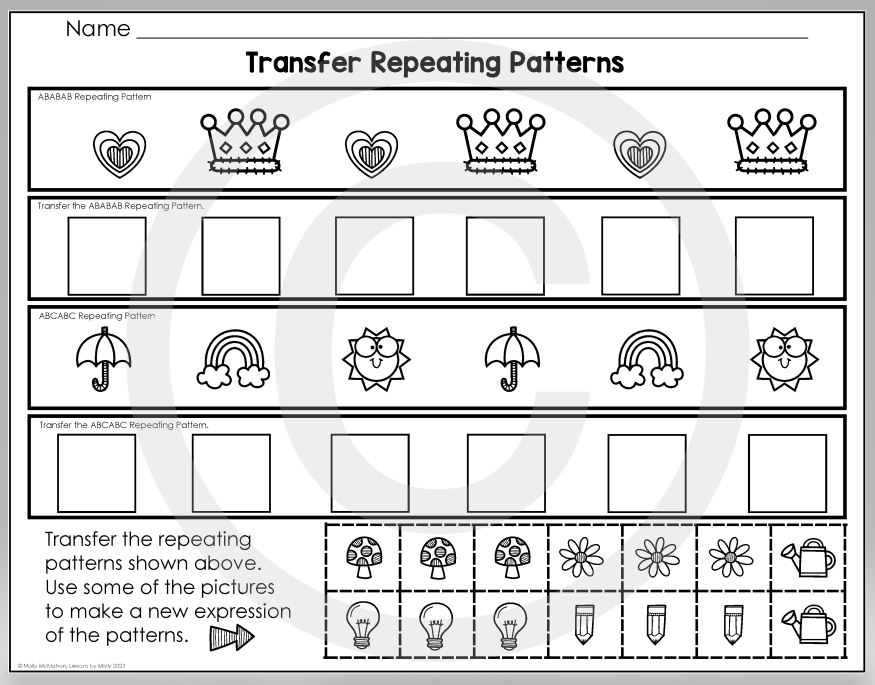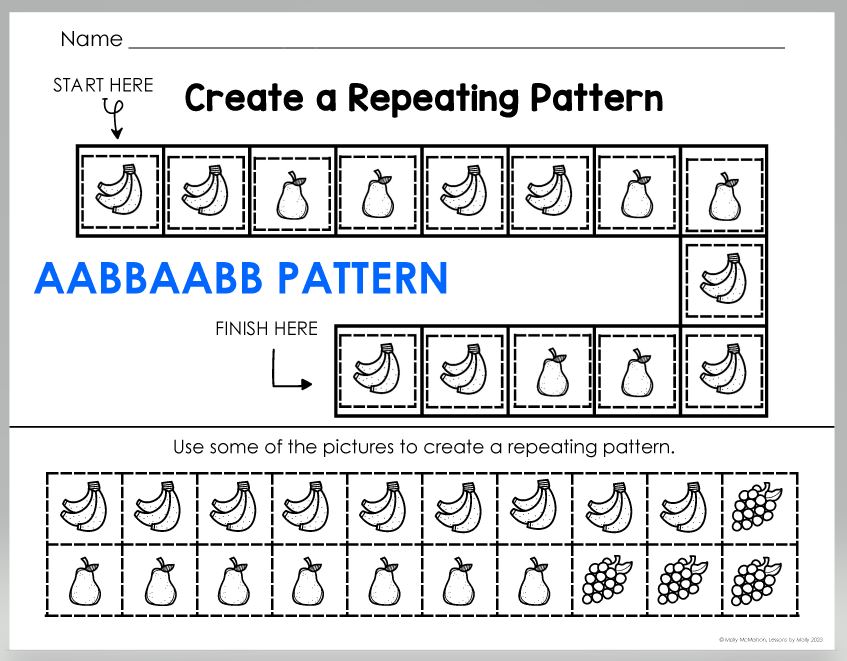Design with the Standard in Mind
Do you prioritize activity creation? Or do you apply accurate, objective alignment when planning lessons? Today, we look at specific worksheets aligning with a Virginia Standard of Learning for kindergarten math. (K.13, 2016) When used together, these worksheets effectively fulfill the standard's requirements in terms of identifying, describing, extending, creating, and transferring repeating patterns.
Worksheet One - Identify Repeating Patterns
The first worksheet showcases a seasonal theme, with rows of pictures forming repeating patterns. Students identify the core of an ABABAB or ABCABC pattern. They need to circle the core in each row. Examples include alternating right-side-up and upside-down ice cream cones and a row with a repeating butterfly, turtle, and frog.
Worksheet Two - Extend Repeating Patterns and Describe Repeating Patterns
The second worksheet requires students to extend an ABAB pattern using images of whole apples and apple cores. The pattern consists of four full repeats and one partial repeat. Students cut and glue additional pictures to complete the pattern, achieving three full repeats of the core and two partial repeats. Students describe the pattern regarding the material used, choosing between sounds, objects, pictures, and movements.
Worksheet Three - Transfer Repeating Patterns
The third worksheet is dedicated to pattern transfer, requiring students to recreate an ABAB pattern and an ABCABC pattern using pictures. I recommend that students first engage in activities focused on practicing the ABABAB and ABCABC repeats separately. Once they have mastered both individually, they can advance to this integrated worksheet, allowing them to use pattern transfer skills with the ABABAB and the ABCABC patterns.
Worksheet Four - Create Repeating Patterns
Finally, the fourth worksheet encourages students to create a pattern by cutting and gluing various images along a designated path. The range of pictures allows students to design many pattern types, making the outcome open-ended. View the possibilities at the end of this post.
Building Complexity: One Pattern at a Time
The showcased worksheets primarily focus on the ABAB pattern and the ABCABC pattern. It is essential to note that by incorporating additional worksheets, such as those featuring the AABBAABB, ABBABB, and AABAABAAB patterns, the curriculum's suggested pattern types would be fully addressed. This approach ensures that students explore a variety of repeating pattern structures.
Beyond Pictures: Expanding Pattern Exploration
It is crucial for educators to incorporate activities that encompass a broader range of materials than pictures. Incorporate objects, sounds, and movement into patterning exercises. Objects can help students connect abstract patterns to tangible items in their environment. Sounds and movement patterns adds a multi-sensory element to the learning experience.
Objective Alignment: Meeting the Standard's Criteria
Before incorporating an educational resource activity, assessing whether it aligns with the objective we aim to teach is crucial, despite its apparent fun and creative nature.
Upcoming Blog Post
In the upcoming blog post, we will explore natural patterns and assess their alignment with the VDOE Standards of Learning Curriculum Framework, analyzing how they align and where deviations may occur.
Open-Ended Outcomes
Featuring a single worksheet, four distinct patterns are created.
© 2023 Molly McMahon, Lessons by Molly
(References: 1. Virginia Department of Education, Standards of Learning, 2016.)








No comments:
Post a Comment